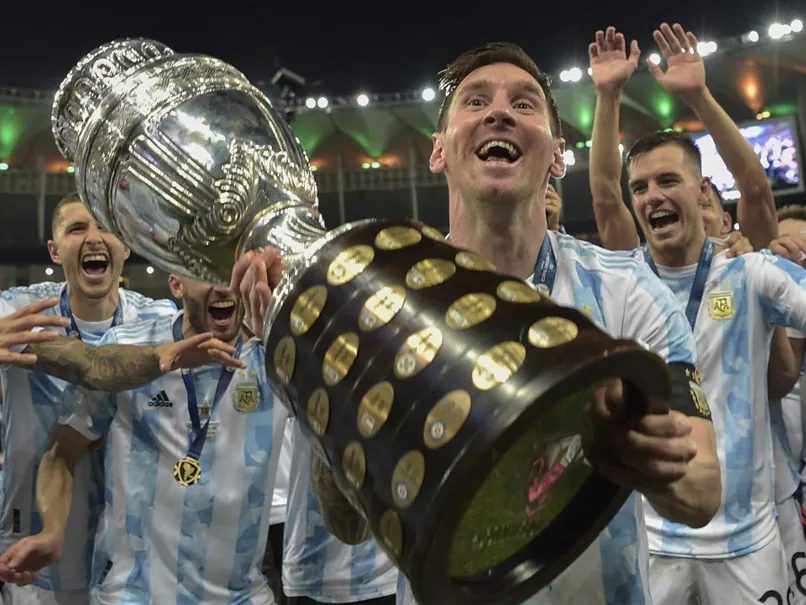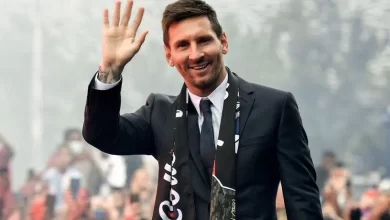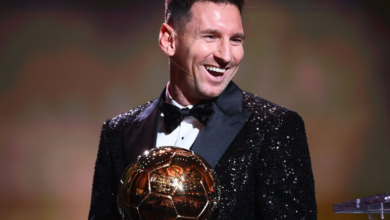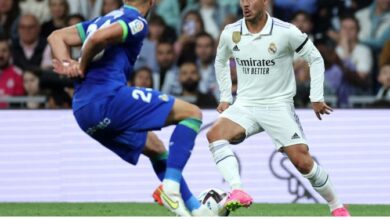2022 FIFA World Cup: Know about positions, football field and different types of kicks

Hyderabad:Football is a sport played between two teams of eleven players each on a rectangular-shaped playing field or pitch that is marked by lines. The surface of the pitch could be either grass or artificial turf. If it is an artificial turf, the colour of the surface must be only green and it should also meet the FIFA Quality Concept for Football Turf standards.
While the two longer boundary lines are called touchlines, the shorter boundary lines are called goal lines. The playing field is divided into two halves by a halfway line.
Dimensions of the playing field
The Length (touch line) of the pitch must be a minimum of 100 metres (110 yards) and a maximum of 110 metres (120 yards).
The Width (goal line) of the pitch must be a minimum of 64 metres (70 yards) and a maximum of 75 metres (80 yards).
Note: The lines drawn shouldn’t be more than 5 inches or 12 cm.
Goals
Goals, consisting of two goalposts and a horizontal crossbar, are placed in the centre of the goal lines.
Offside rule
The offside rule is one of the toughest rules to understand, but it is this offside rule that makes football interesting and enjoyable. It was introduced in 1883 to dissuade footballers from lurking near the team’s goal.
When a pass is being played, an attacking player must have at least two defending players between himself and the opposition team’s goalpost.
Let’s see this with an example:
A – Player who plays the pass
B – Player to whom the pass is played by the player A
C – Defender 1 or goalkeeper
D – Defender 2 or goalkeeper
By the time the ball leaves A during the pass, any body part of player Y cannot be beyond player D or C and the ball. An ‘offside’ is called when a player is ahead of the ball and the 2nd last defender.
Cards
In general, there are two types of cards in football. They are displayed by umpires, or players receive them for committing offences like displaying unsporting behaviour, violating laws of the game, and delaying the play, among other offences.
Yellow card: It is issued to warn players for involving in misconduct for the first time during the course of the game.
Red card: Considered a severe penalty in football, a red card means the dismissal of a player from the field, and no substitution is allowed further.
Note: If a player receives two yellow cards in a match, the player automatically gets a red card.
Positions
Positions in football explain the roles and responsibilities of each player. There are four main positions in the game, namely goalkeeper, defender, midfielder, and forwards. While only one member of a football team is designated as a keeper, the number of midfielders, defenders, and forwards can vary according to the team’s strategies.
Goalkeeper position
The goalkeeper is an important position in football and his main job is to prevent goals. A goalkeeper, also known as a Keeper or Goalie, is the only player who is allowed to touch or hold the ball with his hands on the field. He can pick the ball with his hands, kick and throw the ball to his teammates. Generally seen in a penalty box, a goalie dons different clothing than the rest of the teammates to help umpires recognise them. A player is not allowed to touch or kick the ball when it is in the possession of the goalkeeper.
Defenders
Defenders are assigned the task of defending goals from opposition attacks. Most of the teams go with three or five defenders in a match. They are further divided into two categories – Centre back and Full back. Centre-backs, also called central defenders, are stationed in front of the team’s goal to prevent opposition team players from scoring goals.
The players whom you see operating from either side of the centre-backs on the field are called full-backs. Full backs are sometimes called wing backs when a team uses 3-5-2, 3-4-3, and 3-4-1-2 set-up or formation.
Midfielders
A Midfielder is a player who is stationed in the central part of the football pitch between two goals. They play both defensive and attacking roles by maintaining possession of the ball, passing the ball between defenders and forwards, and breaking up attacks.
Midfielders can be divided into different categories according to their team formations.
Central midfielders: They act as a link between defence and attack by dominating the game in the centre part of the pitch. In addition to passing the ball to their central attacking midfielder and forwards, they also attempt to score goals on their own.
Central defensive midfielder (CDM): CDM is a midfielder who is positioned in front of defenders to defend attacking players of the opponent’s team.
Central Attacking Midfielder (CAM): Known for their killer passes, Central Attacking Midfielders are the most advanced players. They focus on assisting goals and providing chances for the forwards to score goals.
Wingers: A winger is an attacking Midfielder positioned near the left and right side touchline of the pitch. Their primary job is to attack and take on opposition team defenders, create shooting opportunities, support forwards, and score goals for teams.
Forwards
Forwards, who stay close to the opposition team’s goal, are assigned the task of scoring goals for their respective teams and creating scoring opportunities for other players. They are the players with great skill and are physically imposing as they always try to create space for attack. A forward who plays the game in front of the goal is called a centre-forward.
Free kick
It is a method of restarting the game by awarding a free kick to the opposing team whenever a player commits a foul or violates football laws. There are two types of free kicks – direct and indirect. Direct kick means a player can directly kick the ball into the goal. But in indirect kick, a player cannot kick the ball directly into the goal. The ball must be touched by some other players before scoring the goal.
Corner kick
It is a method used to restart the game when the ball crosses the goal line and a goal is not scored. It is always taken from the nearest corner of the pitch from where the ball crosses the goal line.
Penalty kick
A penalty kick is usually awarded to the attacking team whenever a player from the opponent team player commits a foul within the penalty area. The penalty kick is taken from the penalty spot and only a goalkeeper is allowed to defend.
Ball
The ball used in the game must be spherical in shape and made of leather or other suitable material. The circumference of the ball should not be more than 70 cm and less than 68 cm. The weight of the ball must be anywhere between 410 grams and 450 grams, and it can be replaced if it gets damaged during the course of the game.







